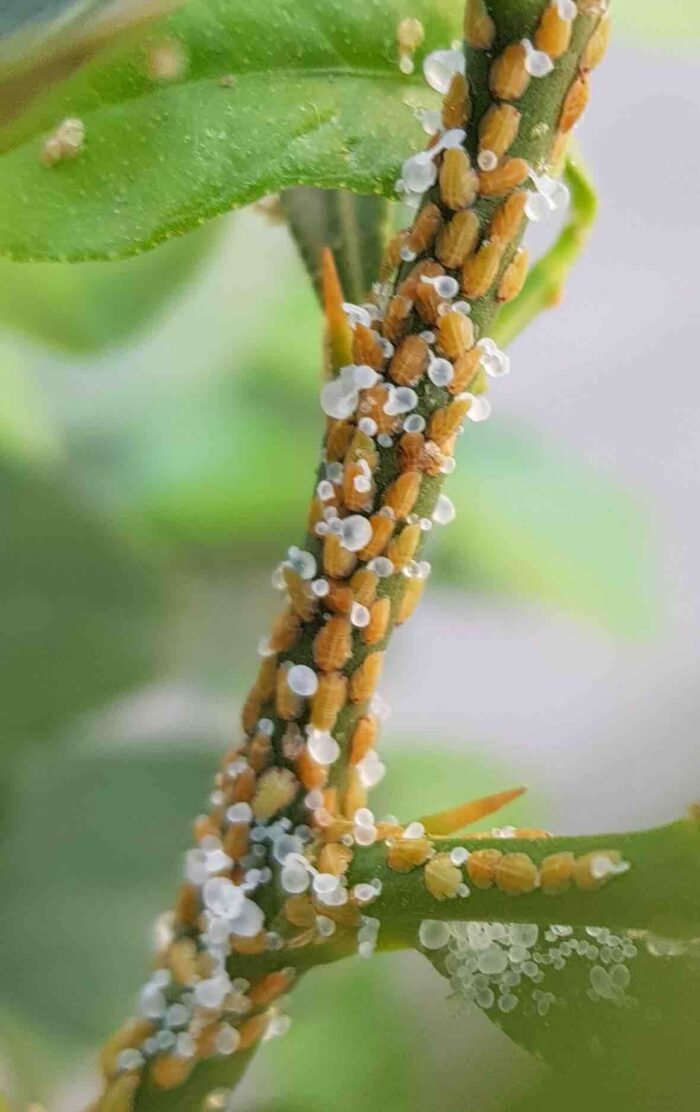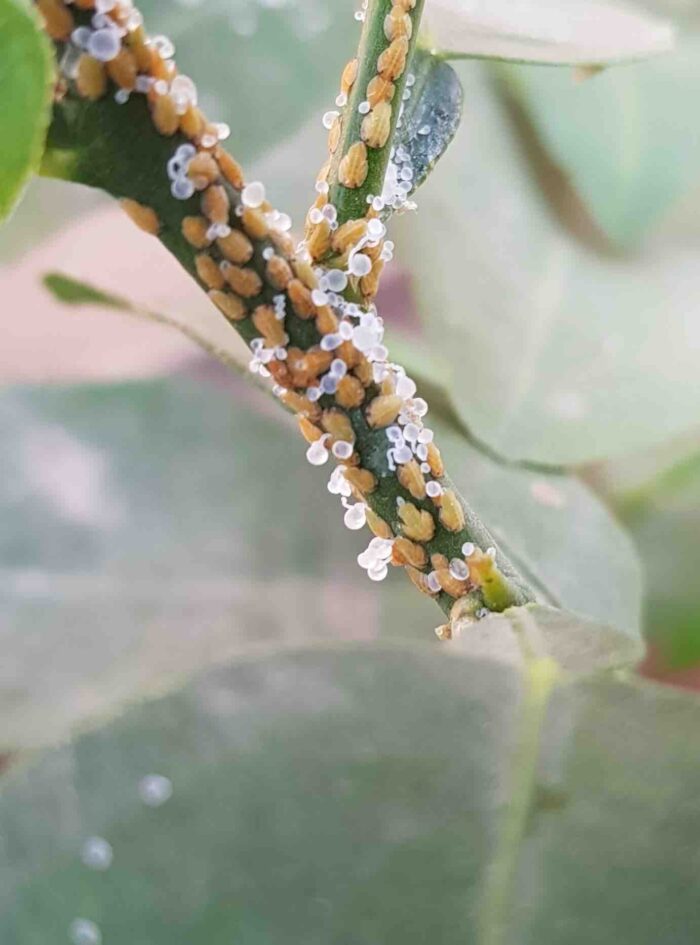Bệnh vàng lá, gân xanh trên cây có múi
Citrus trees
Affected Plant Parts
Citrus green symptoms vary depending on the citrus species and the environmental conditions. The symptoms may initially appear on a single shoot. The most common symptoms to appear in early stages are blotchy, mottled leaves. Leaf mottling, asymmetric chlorosis, and yellowing of veins and midribs will likely show up as the disease progresses. Infected trees will produce fewer, smaller, bitter-tasting fruits that oftentimes remain green in color. In later stages of the disease, symptoms on leaves might resemble nutritional deficiencies and may be misdiagnosed. Another symptom seen with citrus greening is vine corking. Though, vine corking could also be due to a citrus tristeza virus infection.
Asian Psyllid
The Asian citrus psyllid is a tiny, white-brown, mottled insect that is about the size of an aphid. The adult psyllid feeds with its head down, almost touching the leaf, and the rest of its body is raised from the surface at an almost 45-degree angle with its tail in the air. No other citrus pests position their bodies like this while feeding. Adults typically live 1-2 months. Females lay tiny yellow-orange, almond-shaped eggs in the folds of developing citrus leaves. Each female can lay several hundred eggs during her lifespan. Psyllid produce white waxy tubules around their rear end. Stages of the psyllid can live anywhere on the tree, but the immature stages and eggs will be found on young leaves. With time, psyllid presence on trees give rise to the formation of sooty mold.
Citrus greening is a bacterial disease, exclusive on the citrus genus. The bacteria is vectored and transmitted by Asian citrus psyllid (Diaphorina citri) and African citrus psyllid (Trioza erytreae).
Citrus greening can kill trees, which severely reduces production. The bacteria is spread from tree-to-tree by psyllid vectors. Nothing can be done once a tree is infected; there is no cure for citrus greening.
Loại bỏ rầy chổng cánh trên nhóm cây có múi (Asian citrus psyllid) trước khi bệnh có thể lây nhiễm sang nhiều cây hơn.
Không sử dụng các sản phẩm dựa trên cùng một hoạt chất trong các đợt trị bệnh liên tiếp. Điều này có thể gây ra tình trạng kháng các thành phần cụ thể được sử dụng.
Các sản phẩm được sử dụng ở một hoặc nhiều nơi trên thế giới có thể chứa các thành phần sau:
Group 1: imidacloprid, acetamiprid, và thiamethoxam
Group 2: abamectin (kết hợp với thiamethoxam)
Group 3: dimethoate
Group 4: fenpropathrin
Group 5: diflubenzuron
azadirachtin, dầu neem, pyrethrins, và muối kali axit béo.
*Names marked in red are considered to be highly poisonous to beneficial insects.
*Names marked in green are considered to be organic and IPM (integrated pest management) compatible.
thư viện hình ảnh


